Trump’s Nuclear Wishlist is Overkill
The Trump Administration released its Fiscal Year (FY) 2020 budget, requesting $750 billion for national security, a 4.7 percent increase over last year. These presidential budgets are mostly symbolic, an opening move in negotiations with Congress, which will pass the final budget. However, they do reflect the Administration’s priorities.
The administration’s request keeps the U.S. on track to spend an estimated $1.7 trillion modernizing the nuclear arsenal and adheres to the guidance of the 2018 Nuclear Posture Review (NPR) to expand the U.S. nuclear arsenal. The request for the National Nuclear Security Administration, the agency overseeing U.S. nuclear warheads (the explosive packages), alone includes $12.4 billion for nuclear weapons research and production, a dramatic 11.8 percent increase from the previous year’s budget.
In 2018, Global Zero released its Alternative Nuclear Posture Review (Alt-NPR), outlining a realistic U.S. nuclear arsenal based on a deterrence-only role, meaning the sole purpose of the nuclear force would be to deter a nuclear attack against the United States and its allies, and that the United States would commit to never using nuclear weapons first. With a deterrence-only strategy, the United States can meet any reasonable definition of deterrence with approximately one-third of the current force, pending the elimination of all nuclear weapons. This would not only reduce the risk of nuclear use, but it would free up billions of dollars in unnecessary spending.
With the administration’s outsized defense request with Congress, the time is ripe to comb through the NPR and modernization plans and compared their numbers to our own:

“Deployed” warheads are those that are attached to a delivery system, such as a missile, or ready to use. “Reserve” refers to those in long-term storage.
To get these nuclear warheads to their targets, the United States maintains a “nuclear triad” of land-based missiles, sea-launched missiles on submarines, and planes (bombers and tactical fighter jets). The Alt-NPR calls for the U.S. to maintain a “nuclear monad” of sea-launched missiles on submarines. A reserve bomber force would be maintained and all land-based missiles would be retired.
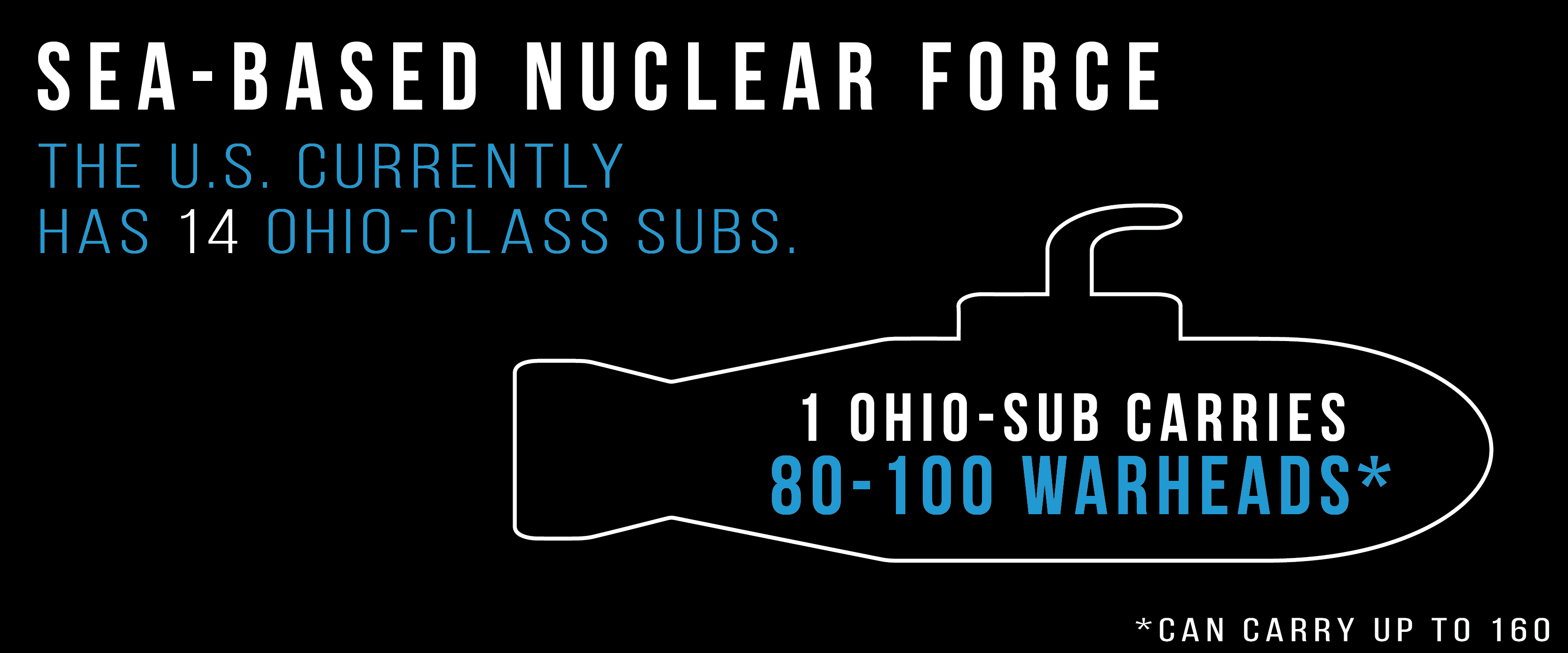
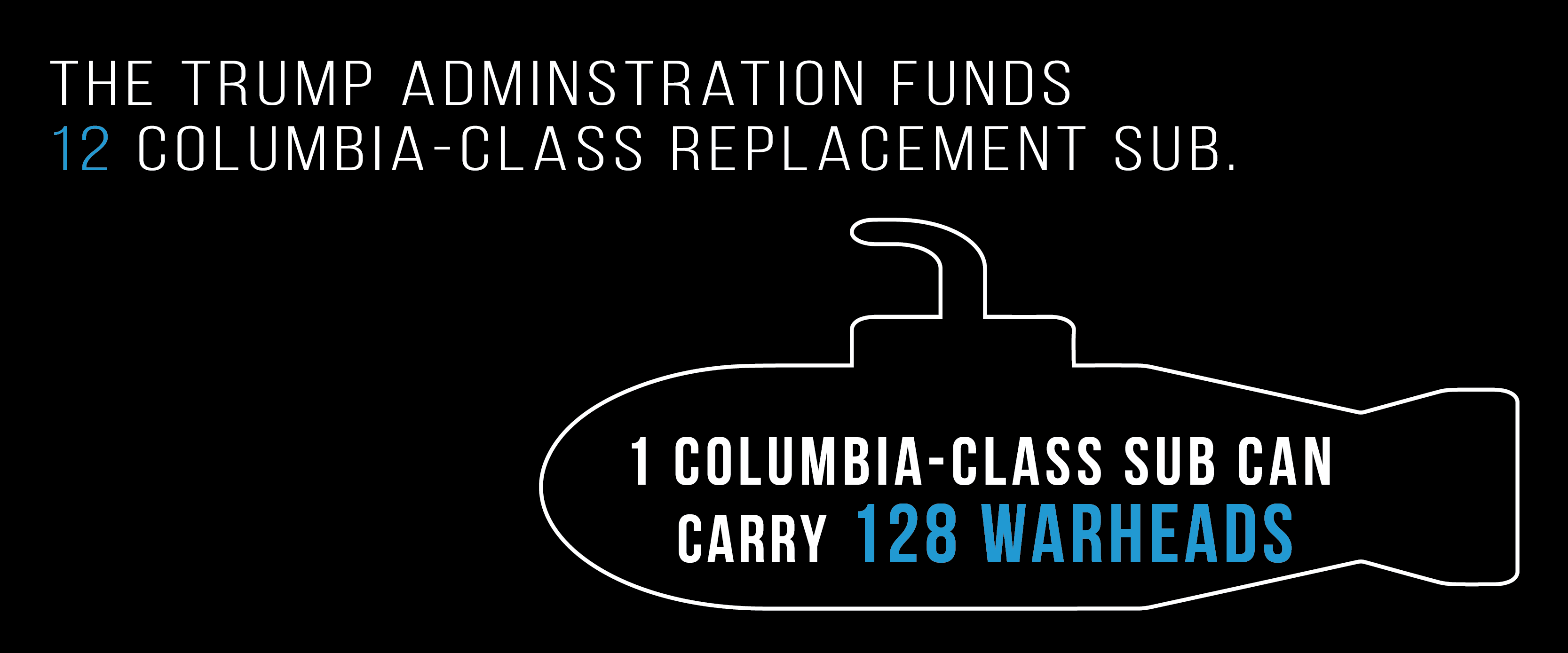

The Trump Administration’s NPR maintains the existing plan to buy 12 new Columbia-class subs to replace the Ohio-class fleet. The deterrence-only strategy outlined in the Alt-NPR requires only five Columbia-class subs.

The Trump administration started production on a new “low-yield” (smaller explosive package) nuclear warhead for use on a sea-launched ballistic missile. To find out how unnecessary and dangerous this new weapon is, read our explanation here.
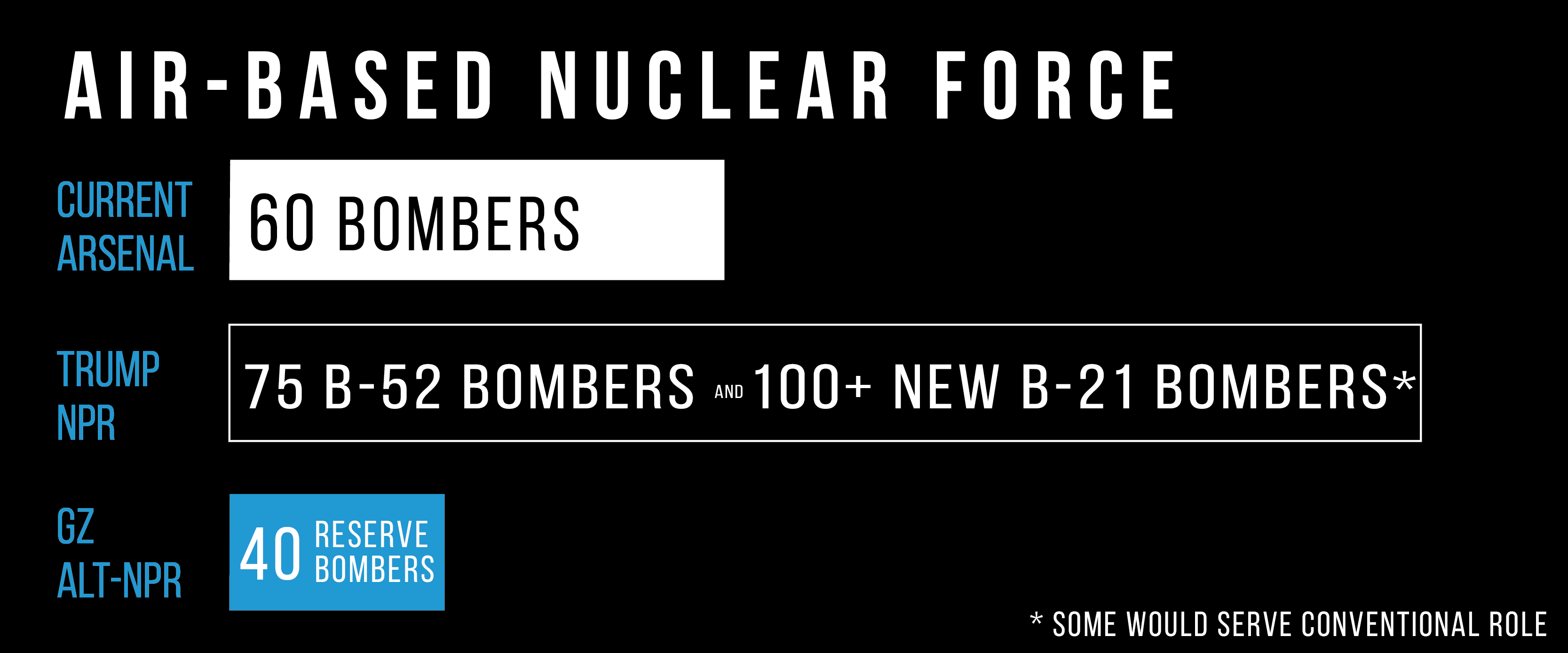
In the current fleet, 44 B-52 bombers and 16 B-2 bombers are responsible for dropping nuclear bombs, if ordered. The Air Force has more bombers, but they are not all equipped to carry nuclear weapons. The 2018 NPR calls for upgrading 75 B-52 bombers and buying at least 100 new B-21 bombers (some with a conventional, or non-nuclear, role). Global Zero calls for only 40 bombers total, to be kept in reserve.
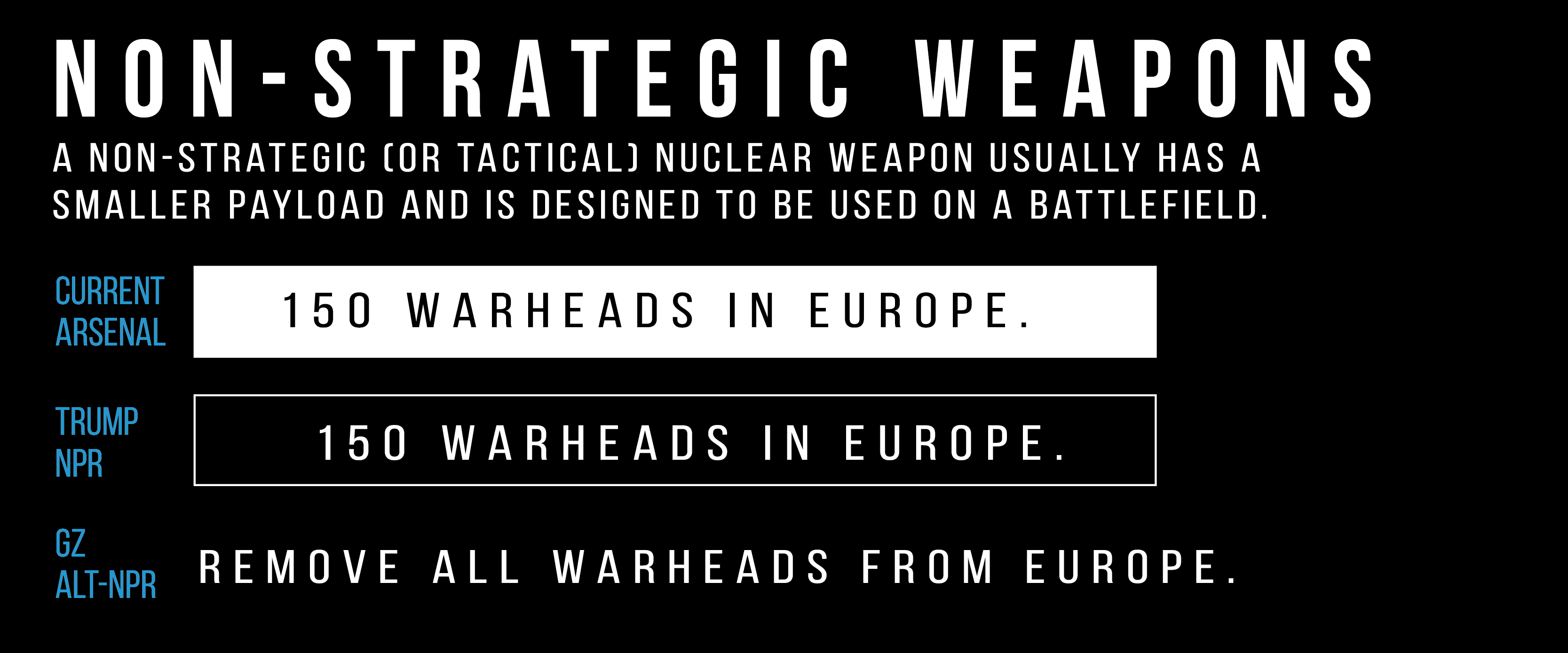
The United States has approximately 150 nuclear weapons on six European bases in five countries — Belgium, Germany, Italy, the Netherlands and Turkey. Global Zero’s Alt-NPR mandates removing all bombs from Europe and placing them in central storage in the United States.
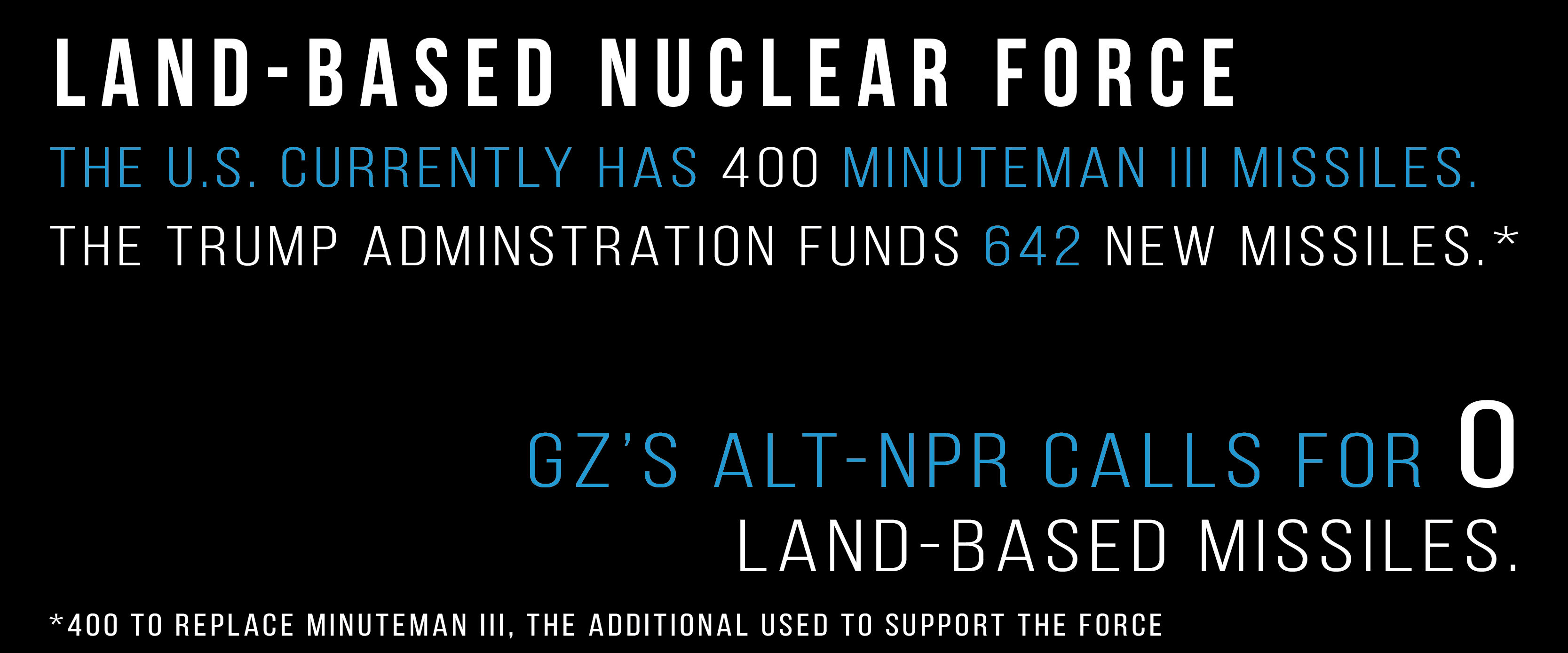
The modernization plan calls for development of a new Ground-Based Strategic Deterrent (GBSD) to replace the Minuteman III intercontinental ballistic missiles sitting on high-alert in silos in Wyoming, Nebraska, Colorado, Montana and North Dakota. These missiles add little to nuclear deterrence and carry an unacceptable risk of launch by accident, miscalculation or on false warning of an incoming attack. The Global Zero Alt-NPR recommends eliminating all land-based missiles and canceling the GBSD project.
The 2020 budget request includes funding for unnecessary weapons and dangerous new capabilities that only serve to increase the risk that nuclear weapons will be used. By transitioning to the smaller, more secure nuclear posture outlined in Global Zero’s Alt-NPR, the United States would save money, reduce the risk of nuclear use and position the U.S. once again as a leader on the path to global zero.
*Current arsenal numbers are from personal communication with Hans M. Kristensen of the Federation of American Scientists and from Kristensen and Robert S. Norris, U.S. Nuclear Forces, 2018.